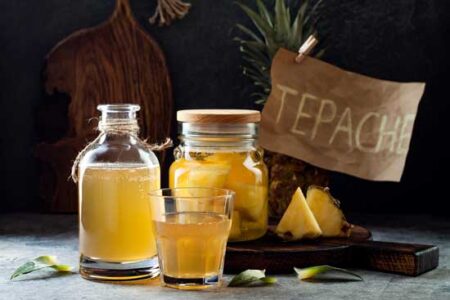Getty Images/Mizina
The best water to use for this recipe is well or spring water, which contain natural minerals needed to help keep the culture thriving. Water from certain sources not only hinders the culture from thriving, but may also kill it. Here’s a full list of types of water to use and avoid.
Types of Water to Use in Fermentation
Good Options:
- Bottled water: Collected from rivers or streams.
- Spring water: Straight out of the ground and bottled, or sourced from a community spring.
- Well water: Generally high in minerals.
Options To Avoid:
- Distilled water: All traces of minerals have been removed during the distilling process.
- Municipal (tap) water: Generally contains chlorine and fluoride, as well as other chemicals.
Treating Water
(Water containing chlorine can be treated, and in some cases, fluoride can be removed.)
- Boiling: Removes chlorine, but not fluoride.
- Basic charcoal filtration: Removes chlorine, but not the fluoride.
- Enhanced filtration: Removes chlorine; certain models may also remove the fluoride.
- Reverse osmosis: Removes chlorine and most minerals and fluoride.
Ginger Bug Recipe
Fermentation Time
Fermentation type: Lacto Primary Fermentation: 5 days Total Time: 5 days
Yield: about 1 quart.
Ingredients
- 1 quart-size glass canning jar
- 1 or 2 fresh ginger roots
- 2 tablespoons grated ginger
- 2 tablespoons organic unrefined sugar
- 2 cups well or spring water
Instructions
- Grate the ginger roots into a quart-sized canning jar.
- Add equal amounts of grated ginger and organic unrefined sugar.
- Add water to the jar.
- Stir with a nonreactive utensil, and secure a coffee filter, cheesecloth, or breathable towel over the mouth of the jar with a rubber band or twine. Leave on the counter to culture at 72 to 80 degrees Fahrenheit.
- Once each day for 5 days, stir the mixture and feed the culture by adding 1 tablespoon each of
grated ginger root and sugar.
Learn about more ways to use your ginger bug starter by checking out these links;
Ann Accetta-Scott is a homesteader and blogger who lives in the Puget Sound area of Washington and teaches classes on food preservation. This article and its accompanying ginger bug recipe are excerpted from her book The Farm Girl’s Guide to Preserving the Harvest (Rowman & Littlefield).







